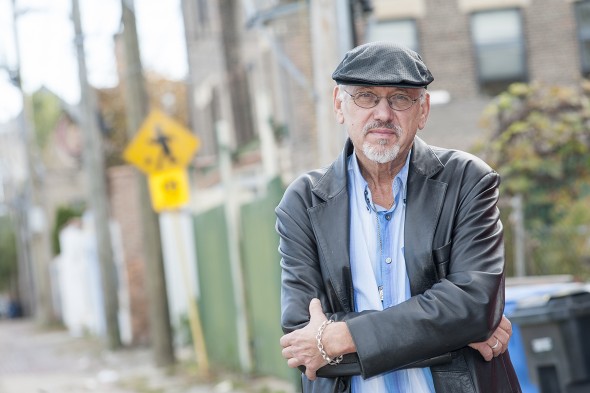Criminologist connects Mafia with Chicago street gangs

“The best way to prevent violence is to provide hope,” says John Hagedorn, who studies urban gangs. Photo: Roberta Dupuis-Devlin
UIC professor John Hagedorn has studied gangs for over three decades. But he was forced to rethink much of what he knew about gangs while researching and writing his latest book, The In$ane Chicago Way.
The book was developed after three years of interviews with a soldier from Chicago’s Mafia, also known as the Outfit. Hagedorn’s source dishes on a covert 1990s plan by Chicago gangs to establish a Latino Mafia modeled after Al Capone’s mob.
Hagedorn said the organization of Latino gangs, called Spanish Growth and Development (SGD), was formed by 17 Latin Folks gangs, including the C-Note$, a group he describes as a Grand Avenue-based “minor league” team of the Outfit.
“Their role was to attempt to channel this new form under the Outfit’s influence,” said Hagedorn, professor of criminology, law and justice, who said he’d never heard of the plan until informed by his tipster.
The book augments the disgruntled informant’s perspective with secret documents and interviews of top leaders, court records and media reports.
Hagedorn talked to city gang leaders, who agreed there was plenty of money to be made for everybody involved. From those discussions, a similar question arose. Why didn’t the plan work?
“These gangs form families and are contending for power,” Hagedorn explained. “They also rely on police corruption.”
The group’s demise was sealed when a “war of the families,” or factional struggle for power, led to a shooting shortly after a gang-organized peace conference, he said. The incident was the final straw for the Outfit, which withdrew from the endeavor.
The In$ane Chicago Way reports on the role of police corruption and the differences between Latino, black and white gangs, and their relationship to organized crime.
Hagedorn tells the story of how the 1990s shaped the nature of gang organizations today.
He details how organized gang wars, led by incarcerated gang chiefs, produced homicide rates in the 1990s that were double current levels.
Gang leaders lack authority to stop violence
“The wars didn’t end because of any new police tactics, but rather they exhausted and fractured the gangs and broke the hold of the old gang leaders,” he explained. “Today’s black gang members particularly are rebellious even against their old gang chiefs.”
Shootings today are more spontaneous, and less controlled, which makes them more dangerous, Hagedorn said.
“Young men hand out violent street justice as retaliation since police can’t seem to find the actual offenders,” he said. “Gang leaders today simply do not have the legitimacy, organization or authority to stop the shootings.”
The current violence problem in Chicago is predominantly about race, not gangs, guns, laws or cartels, Hagedorn said.
While asserting that an easy answer to reduce violence doesn’t exist, he contends any plan must be based on a steep investment in African American communities.
“Chicago’s leaders must address the city’s legacy of racism in employment, housing, education and policing,” he said. “The best way to prevent violence is to provide hope to the desperate underclass of African Americans in our city.”
